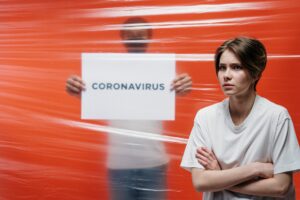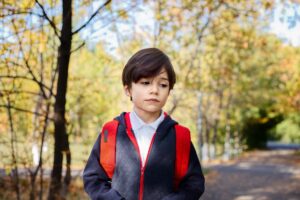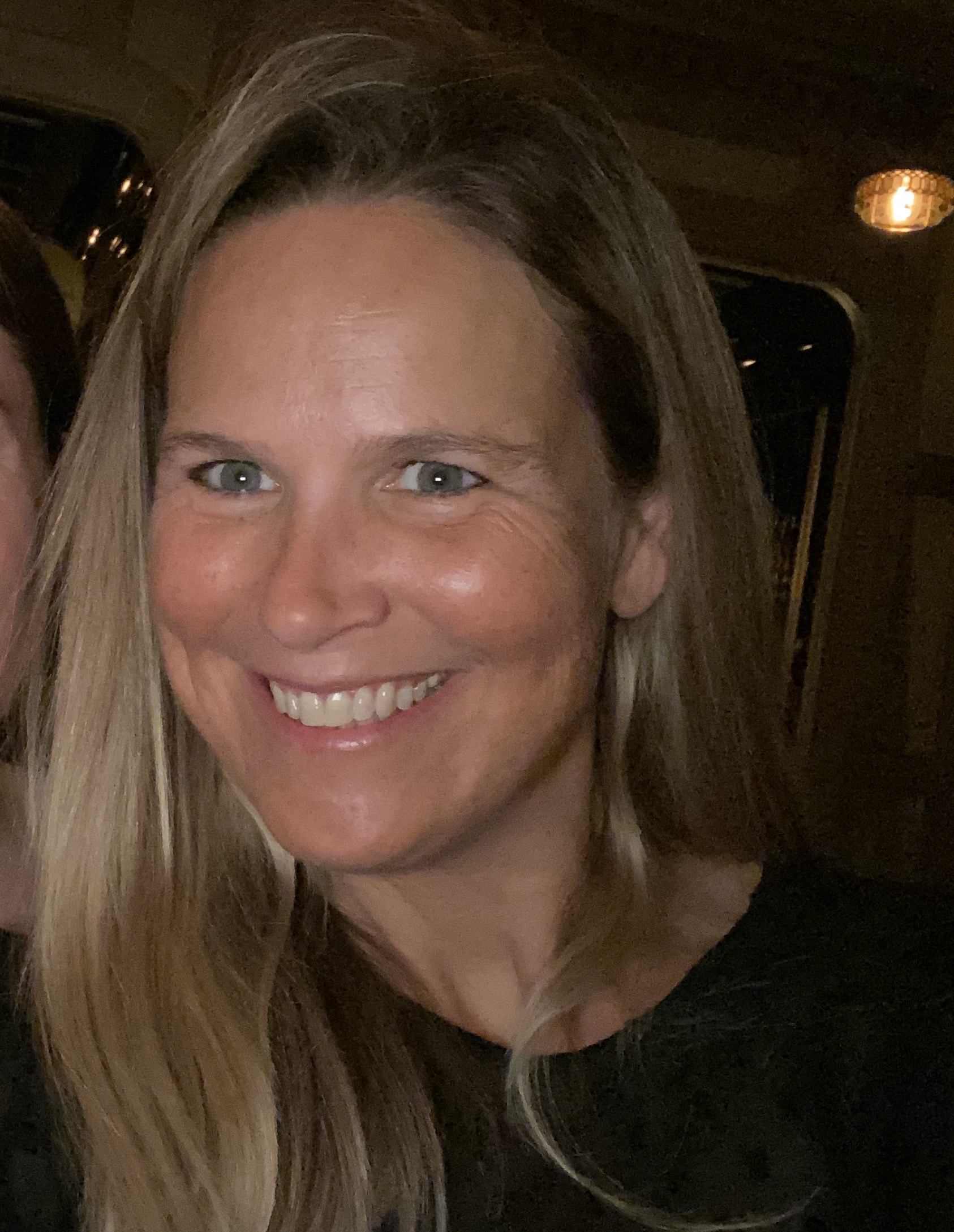 During this global pandemic, I have been asked to help clients work through anxieties that none of us saw coming. Isn’t this the case with anxiety in general? The dictionary defines anxiety as “a feeling of worry, nervousness, or unease, typically about an imminent event or something with an uncertain outcome.” As I think about what it means to send our children back to school this fall, I myself feel uncertain about COVID and what the outcome could be. How do we as a community, nation, world send our children back to school safe and worry free?
During this global pandemic, I have been asked to help clients work through anxieties that none of us saw coming. Isn’t this the case with anxiety in general? The dictionary defines anxiety as “a feeling of worry, nervousness, or unease, typically about an imminent event or something with an uncertain outcome.” As I think about what it means to send our children back to school this fall, I myself feel uncertain about COVID and what the outcome could be. How do we as a community, nation, world send our children back to school safe and worry free?
We don’t.
We do not send them back without worry. We will have anxieties, as will they. What we can do is to manage our uncertainty around this and to teach our children to do the same.
When I think about preparing for a trip, I take all of the appropriate measures. I pack my clothing, medications and toiletries. I shut my home down, let my family know where I am staying and to make certain that I have my credit cards, ID, and phone charger. The same goes for anxiety. Make a list of your concerns. Are your concerns real? Can they be managed? This is where it is important to break down the risk and implications brick by brick. Ask yourself what are the risks of you or your child contracting COVID-19? There is so much information (and misinformation) being thrown at us, it is hard to manage. We do know this (and see below) that if we take the precautionary measures, the likelihood is slim to none for the average healthy person.
Talk to your family and more importantly your children. Ask them what they are afraid of. Discuss the risks. Only you will know what is best for you and your family alone. If I decide that my children are to go back to school that doesn’t mean this is what is right for you. We are all in this together.
I recently sent my children on an airplane (by themselves) to visit their dad out west. We discussed the risks and took the appropriate measures. We felt empowered as a family to make this decision but more importantly my children felt empowered. Discuss. Communicate. Break it down. Dr. Pellegrino, our pediatrician at Princeton Nassau Pediatrics, concurs. As does Nurse Liz Dyevich, the Johnson Park school nurse who happens to be on the risk team for our Princeton schools.
 In my discussion with Dr. Pellegrino, he had this to say. “We are seeing an increase in anxiety with our children, there is no doubt. But it is not what you think. Staying at home, not having a normal schedule, being isolated, is what is causing this anxiety.” He continued to say that “the front-line workers are not contracting the virus at high risk, in fact, we are at lower risk. Why is this? It’s because we are taking the appropriate measures. We are washing our hands, wearing our masks, keeping our distance.”
In my discussion with Dr. Pellegrino, he had this to say. “We are seeing an increase in anxiety with our children, there is no doubt. But it is not what you think. Staying at home, not having a normal schedule, being isolated, is what is causing this anxiety.” He continued to say that “the front-line workers are not contracting the virus at high risk, in fact, we are at lower risk. Why is this? It’s because we are taking the appropriate measures. We are washing our hands, wearing our masks, keeping our distance.”
He worries that if we continue to stay at home the mental health risks will outweigh the medical risks. “If we all do our part then we will continue to minimize the risks,” says Dr. Pellegrino.
What happens then if a child touches a desk after wiping their nose or their paper and they hand it to you? He says take the appropriate measures. Wash your hands. It’s really that simple. Of course, this is all contingent on the “normal healthy kid and family” – meaning, families and children who are immune compromised and are at risk should not return to school and should feel no obligation to do so. Hence the term no one family is alike and should feel no pressure to do what others are doing. Nurse Liz agrees.
When I spoke with Nurse Liz about speaking to our children about anxiety she had this to say. “It is a myth that talking about anxiety will increase anxiety.” Like her, I agree that naming our fears and speaking about them decreases our anxiety. It’s seeing the white elephant in the room, pointing it out. Talking about it. She is also concerned that the mental health impact far outweighs the physical implications. So, the question remains, what do we do to help our families?
It’s important to know, for children returning to Princeton Public Schools, they have re-entry teams (social, emotional, trauma and wellness) that have been working all summer to be ready for students. The school nurses and guidance counselors will be prepared and ready to assist all students upon their return.
Children often mirror their parents non-verbal and verbal cues. Mirroring helps decrease anxiety. If we can demonstrate both verbally and non-verbally, this will in turn teach our children to do the same. I am often struck by standing in line at the grocery store outside of trader Joes, for example. If I am patient, standing in my spot with my mask, my child will do the same. If the person behind me stands too close I will politely ask them to move back to their spot. I am demonstrating to my children the right thing.
 Prior to COVID-19 I often led my children in meditation before school. We sit either cross-legged or feet on the floor and take slow breaths in (3 count) and slow breaths out (3 count). With the breaths in,, we bring in the positive and the breaths out, release the negative. It is often met with eye rolls and deep belly laughs. It has become a morning ritual.
Prior to COVID-19 I often led my children in meditation before school. We sit either cross-legged or feet on the floor and take slow breaths in (3 count) and slow breaths out (3 count). With the breaths in,, we bring in the positive and the breaths out, release the negative. It is often met with eye rolls and deep belly laughs. It has become a morning ritual.
Another helpful tool is bubble blowing. Using bubbles to blow inside or outside the home and then chasing them increases endorphins and again helps with the breathing tools. We have also used balloons. Blowing up balloons as far as they will go and letting them fly rampant around the room will surely ensue giggles and breathing.
Talking with your children and educating your children is the best thing. No one family is the same. Talk to your Doctor. Know your risks. WE ARE IN THIS TOGETHER.
Get more tips and tools on the anxieties of this weighty decision from Elizabeth W. Semrod! Princeton Perspectives Editor, Lisa Jacknow invites Elizabeth to expand on this article and answer your questions at an upcoming community Zoom lecture on Tuesday, September 1 at 8pm. Click here to RSVP for the Zoom link!

Elizabeth W. Semrod is a Licensed Clinical Social Worker with a private practice in Princeton, NJ who specializes in anxiety and depressive disorders in children and adolescents. She is also a consulting clinician for Trinity Counseling Service.
